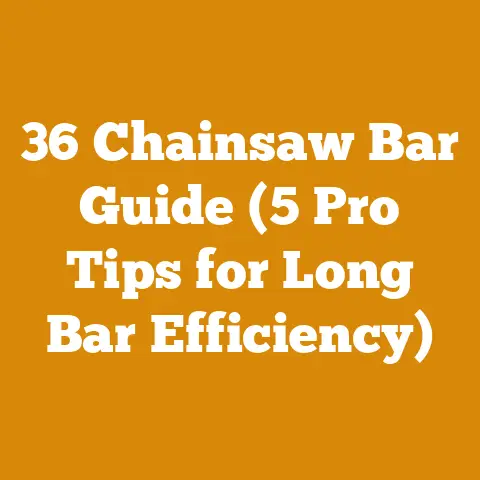24 HP Honda V-Twin Engines: Troubleshooting Tips (5 Pro Fixes)
Your Backyard Budget is About to Explode if Your 24 HP Honda V-Twin Engine Bites the Dust!
Let’s face it, a 24 HP Honda V-Twin engine is the workhorse behind a lot of our projects, from powering wood splitters to keeping our mowers humming. When it coughs, sputters, or outright refuses to start, it’s not just an inconvenience; it’s a hit to our wallets. Believe me, I’ve been there. I remember one particularly brutal winter where my firewood splitter, powered by a 24 HP Honda, decided to take an unscheduled vacation. The cost of heating oil skyrocketed while I wrestled with a frozen engine. That experience taught me the hard way that knowing how to troubleshoot these engines isn’t just a handy skill; it’s crucial for keeping projects on track and budgets in check.
Understanding the Stakes: The Cost of Engine Trouble
Before we dive into the fixes, let’s understand what’s at stake. A malfunctioning engine can halt production, leading to delays and lost revenue if you’re a professional. For the hobbyist, it can turn a relaxing weekend project into a frustrating and expensive ordeal. Here’s a breakdown of potential costs:
- Repair Shop Fees: Expect to pay anywhere from \$75 to \$150 per hour for labor at a repair shop. Complex engine repairs can easily run into hundreds, if not thousands, of dollars.
- Parts Costs: Replacement parts for Honda engines can be surprisingly expensive. A new carburetor, for example, can cost between \$50 and \$200, while a replacement starter can set you back \$100-\$300.
- Downtime Costs: The value of your time and the cost of delayed projects are often overlooked. If you’re a professional logger or firewood supplier, downtime can translate to significant financial losses. Even for personal projects, delays can be frustrating and costly.
- Replacement Costs: In the worst-case scenario, you might need to replace the entire engine. A new 24 HP Honda V-Twin can easily cost \$1,500 to \$3,000, depending on the model and features.
Five Pro Fixes and Their Cost Implications
Now, let’s get to the heart of the matter: troubleshooting. Here are five common issues with 24 HP Honda V-Twin engines and how to address them, along with a realistic assessment of the cost involved.
1. Fuel System Issues: The Dirty Carburetor Dilemma
The Problem: One of the most common culprits behind a sputtering or non-starting engine is a dirty carburetor. Over time, gasoline can break down and leave behind deposits that clog the carburetor’s jets and passages, preventing proper fuel flow.
The Fix:
- Cleaning: Start by draining the fuel tank and carburetor bowl. Inspect the fuel for contamination. If the fuel is old or dirty, replace it with fresh gasoline. Next, remove the carburetor and carefully disassemble it. Use carburetor cleaner and compressed air to clean all the jets and passages. Reassemble the carburetor and reinstall it on the engine.
- Replacement: If cleaning doesn’t solve the problem, or if the carburetor is severely damaged, you may need to replace it.
Cost Implications:
- Cleaning: Carburetor cleaner typically costs around \$10-\$20 per can. Compressed air is usually available at most workshops. The real cost here is your time. Budget 1-2 hours for this task.
- Replacement: As mentioned earlier, a new carburetor can cost \$50-\$200. This is a significant expense, but it’s often cheaper than paying a mechanic to diagnose and repair the old one.
Personal Experience: I once spent an entire afternoon trying to clean a carburetor on an old generator. I thought I had done a thorough job, but the engine still wouldn’t run properly. In the end, I had to bite the bullet and buy a new carburetor. The lesson learned? Sometimes, the time and effort spent trying to salvage a part aren’t worth it.
Budgeting Tip: Always use fresh, stabilized fuel in your engine. Fuel stabilizers prevent gasoline from breaking down and forming deposits, which can significantly reduce the risk of carburetor problems. I add fuel stabilizer to every gas can I use for my small engines.
2. Ignition System Problems: Spark Plug Shenanigans
The Problem: A faulty spark plug can prevent the engine from starting or cause it to run poorly. Spark plugs wear out over time and can become fouled with carbon deposits or oil.
The Fix:
- Inspection: Remove the spark plug and inspect it for wear, damage, or fouling. A healthy spark plug should have a clean, dry electrode with a sharp edge.
- Cleaning: If the spark plug is only slightly fouled, you can try cleaning it with a wire brush or spark plug cleaner.
- Replacement: If the spark plug is worn, damaged, or heavily fouled, replace it with a new one.
Cost Implications:
- Spark Plug: A new spark plug for a 24 HP Honda V-Twin typically costs \$5-\$15. This is a relatively inexpensive fix.
- Spark Plug Cleaner: A can of spark plug cleaner costs around \$5-\$10.
Personal Experience: I once had a chainsaw that refused to start. I checked the fuel, the air filter, and everything else I could think of. Finally, I decided to check the spark plug. It was completely black and covered in carbon deposits. I replaced it with a new one, and the chainsaw fired right up. It was a simple fix that saved me a lot of frustration.
Budgeting Tip: Replace your spark plugs regularly, even if they don’t appear to be worn. Refer to your engine’s owner’s manual for the recommended replacement interval. This is a cheap insurance policy against ignition problems.
3. Low Oil Level: The Silent Killer
The Problem: Many small engines, including the 24 HP Honda V-Twin, are equipped with a low-oil shutdown system. This system is designed to prevent engine damage by shutting off the engine when the oil level is too low.
The Fix:
- Check the Oil Level: Use the dipstick to check the oil level. If the oil level is low, add the recommended type and amount of oil.
- Inspect for Leaks: Check for any oil leaks around the engine. If you find a leak, address it promptly to prevent further oil loss and potential engine damage.
Cost Implications:
- Oil: A quart of oil typically costs \$5-\$10.
- Leak Repair: The cost of repairing an oil leak can vary depending on the severity of the leak and the location of the leak. A simple gasket replacement might cost \$20-\$50, while a more complex repair could cost hundreds of dollars.
Personal Experience: I once neglected to check the oil level in my wood splitter before starting it. The engine ran for a few minutes and then abruptly shut off. I was lucky that the low-oil shutdown system worked as intended. I added oil, and the engine started right back up. This experience taught me the importance of regularly checking the oil level in all my small engines.
Budgeting Tip: Make it a habit to check the oil level in your engine before each use. This simple step can prevent costly engine damage. Also, consider using synthetic oil, which provides better protection against wear and tear, especially in demanding applications.
4. Air Filter Woes: The Breathing Problem
The Problem: A dirty air filter restricts airflow to the engine, which can cause it to run poorly, lose power, and even overheat.
The Fix:
- Inspection: Remove the air filter and inspect it for dirt, debris, and damage.
- Cleaning: If the air filter is only slightly dirty, you can try cleaning it with compressed air or by gently tapping it against a hard surface.
- Replacement: If the air filter is heavily soiled, damaged, or cannot be cleaned effectively, replace it with a new one.
Cost Implications:
- Air Filter: A new air filter for a 24 HP Honda V-Twin typically costs \$10-\$20.
- Compressed Air: As mentioned earlier, compressed air is usually available at most workshops.
Personal Experience: I once had a lawnmower that was losing power and running rough. I checked the usual suspects – fuel, spark plug, etc. – but nothing seemed to help. Finally, I decided to check the air filter. It was completely clogged with grass clippings and dirt. I replaced it with a new one, and the lawnmower ran like new.
Budgeting Tip: Clean or replace your air filter regularly, especially if you operate your engine in dusty or dirty conditions. A clean air filter improves engine performance and fuel efficiency, saving you money in the long run. I clean my air filters after every 25 hours of use.
5. Starter Issues: The Reluctant Engine
The Problem: A faulty starter can prevent the engine from starting. Common starter problems include a weak battery, corroded connections, or a malfunctioning starter motor.
The Fix:
- Battery Check: Ensure the battery is fully charged and in good condition. Use a multimeter to check the battery voltage. A healthy battery should read around 12.6 volts.
- Connection Inspection: Check the battery cables and connections for corrosion. Clean any corroded connections with a wire brush and apply dielectric grease to prevent future corrosion.
- Starter Motor Test: If the battery and connections are good, the problem may be with the starter motor itself. You can test the starter motor by using a jumper cable to connect the positive terminal of the battery directly to the starter motor. If the starter motor spins, the problem is likely with the wiring or the starter solenoid. If the starter motor doesn’t spin, the starter motor is likely faulty and needs to be replaced.
Cost Implications:
- Battery: A new battery for a 24 HP Honda V-Twin can cost \$50-\$150.
- Battery Cables: Replacement battery cables cost around \$10-\$20.
- Starter Motor: A new starter motor can cost \$100-\$300.
Personal Experience: I once had a wood splitter that wouldn’t start. I checked the battery, and it seemed to be fine. I then checked the connections, and they were clean and tight. Finally, I decided to test the starter motor. It was completely dead. I replaced the starter motor, and the wood splitter started right up.
Budgeting Tip: Maintain your battery properly by keeping it clean and charged. Use a battery maintainer to keep the battery charged during periods of inactivity. This can extend the life of your battery and prevent starter problems.
1. Timber Acquisition Costs
- Standing Timber: If you’re harvesting your own timber, you’ll need to factor in the cost of purchasing the timber rights. Timber prices vary widely depending on the species, quality, and location. According to the USDA Forest Service, the average stumpage price (the price paid for standing timber) for hardwood sawtimber in the eastern United States in 2023 was around \$300 per thousand board feet (MBF). However, prices can range from \$100 to \$500 or more per MBF depending on the specific species and market conditions.
- Logs: If you’re purchasing logs, the cost will depend on the species, grade, and volume. Log prices are typically quoted per board foot or per cord. A cord is a stacked volume of wood measuring 4 feet high, 4 feet wide, and 8 feet long, totaling 128 cubic feet. According to recent market reports, the average price for a cord of mixed hardwood logs in the northeastern United States ranges from \$150 to \$300.
- Firewood: If you’re purchasing firewood, the cost will depend on the species, seasoning, and quantity. Firewood is typically sold by the cord or by the face cord (a stack of wood measuring 4 feet high and 8 feet long, but with a width that varies depending on the length of the individual pieces). The average price for a cord of seasoned hardwood firewood in the United States ranges from \$200 to \$400, depending on location and demand.
Budgeting Tip: Shop around for the best timber or log prices. Consider purchasing timber or logs in bulk to take advantage of volume discounts. Also, be aware of seasonal price fluctuations. Timber and log prices tend to be lower during the winter months when demand is lower.
2. Tool and Equipment Costs
- Chainsaws: A good quality chainsaw is essential for felling trees and bucking logs. Chainsaw prices range from a few hundred dollars for a basic homeowner model to over \$1,000 for a professional-grade saw.
- Wood Splitters: A wood splitter can significantly reduce the time and effort required to split firewood. Wood splitter prices range from a few hundred dollars for a manual splitter to several thousand dollars for a hydraulic splitter.
- Skidding Equipment: If you’re harvesting your own timber, you’ll need equipment to skid the logs out of the woods. This could include a tractor, a winch, or even a team of horses.
- Safety Equipment: Safety equipment is essential for protecting yourself from injury. This includes a hard hat, safety glasses, ear protection, gloves, and chaps.
Budgeting Tip: Consider renting tools and equipment instead of buying them, especially if you only need them for occasional use. Rental fees typically range from \$50 to \$100 per day for a chainsaw or wood splitter. Also, invest in good quality safety equipment. It’s a small price to pay for protecting your health and well-being.
3. Labor Costs
- Logging Crew: If you’re hiring a logging crew to harvest your timber, you’ll need to factor in their labor costs. Logging crew rates vary depending on the size of the crew, the complexity of the job, and the location.
- Firewood Handlers: If you’re hiring someone to help you split and stack firewood, you’ll need to pay them an hourly wage. The average hourly wage for firewood handlers in the United States is around \$15-\$20.
Budgeting Tip: If you’re on a tight budget, consider doing some of the work yourself. Felling trees and splitting firewood can be physically demanding, but it can save you a significant amount of money.
4. Permits and Regulations
- Logging Permits: Many states and counties require logging permits for commercial timber harvesting. The cost of a logging permit varies depending on the location and the size of the harvest.
- Firewood Regulations: Some states and counties have regulations regarding the sale and transportation of firewood. These regulations are designed to prevent the spread of invasive insects and diseases.
Budgeting Tip: Research the permits and regulations that apply to your project before you begin. Failure to comply with these regulations can result in fines and penalties.
5. Drying and Storage Costs
- Seasoning Time: Firewood needs to be properly seasoned (dried) before it can be burned efficiently. Seasoning typically takes 6-12 months, depending on the species of wood and the climate.
- Storage Space: You’ll need a dry, well-ventilated place to store your firewood while it’s seasoning.
Budgeting Tip: Start seasoning your firewood well in advance of the heating season. This will ensure that you have a supply of dry, ready-to-burn firewood when you need it. Also, consider building a simple firewood shed to protect your firewood from the elements.
Case Study: A Small-Scale Firewood Operation
Let’s look at a hypothetical case study to illustrate the costs involved in a small-scale firewood operation.
Scenario:
- You want to produce and sell 20 cords of seasoned hardwood firewood.
- You purchase standing timber for \$200 per MBF (thousand board feet).
- You hire a logging crew to fell and skid the trees for \$100 per cord.
- You use your own chainsaw and wood splitter.
- You hire a firewood handler to help you split and stack the wood for \$15 per hour.
- You sell the firewood for \$300 per cord.
Cost Breakdown:
- Timber Purchase: Assuming an average yield of 2 cords per MBF, you’ll need to purchase 10 MBF of timber, costing you \$2,000.
- Logging Crew: The logging crew will cost you \$2,000 (20 cords x \$100 per cord).
- Firewood Handler: Assuming it takes 10 hours to split and stack each cord, the firewood handler will cost you \$3,000 (20 cords x 10 hours x \$15 per hour).
- Total Costs: \$7,000
Revenue:
- 20 cords x \$300 per cord = \$6,000
Profit:
- \$6,000 – \$7,000 = -\$1,000
Analysis:
In this scenario, the firewood operation would result in a loss of \$1,000. This highlights the importance of carefully budgeting your costs and maximizing your revenue. You could improve your profitability by:
- Negotiating a lower price for timber or logging services.
- Increasing your selling price.
- Reducing your labor costs by doing more of the work yourself.
- Improving your efficiency to reduce the amount of time it takes to split and stack each cord.
Actionable Takeaways and Next Steps
- Prioritize Engine Maintenance: Regular maintenance, including oil changes, air filter cleaning, and spark plug replacement, can prevent costly engine problems.
- Troubleshoot Before Calling a Pro: Use the troubleshooting tips provided in this article to diagnose common engine problems before calling a mechanic. You might be able to fix the problem yourself and save a lot of money.
- Budget Carefully: Create a detailed budget for your wood processing or firewood preparation project, taking into account all the cost factors involved.
- Shop Around: Compare prices for timber, logs, tools, equipment, and labor before making any purchases or hiring any contractors.
- Stay Safe: Always wear appropriate safety gear when working with chainsaws, wood splitters, and other equipment.
Final Thoughts: A Cord of Wisdom
Wood processing and firewood preparation can be rewarding and profitable activities, but they require careful planning and budgeting. By understanding the cost factors involved and taking steps to optimize your expenses, you can ensure that your projects are successful and profitable. Remember, a penny saved is a penny earned, and in the world of wood processing, every little bit counts. Don’t let a sputtering engine derail your plans. Arm yourself with the knowledge and tools to tackle common problems, and you’ll be well on your way to a successful and cost-effective wood processing or firewood preparation project. And who knows, maybe you’ll even make a little extra “green” in the process!






